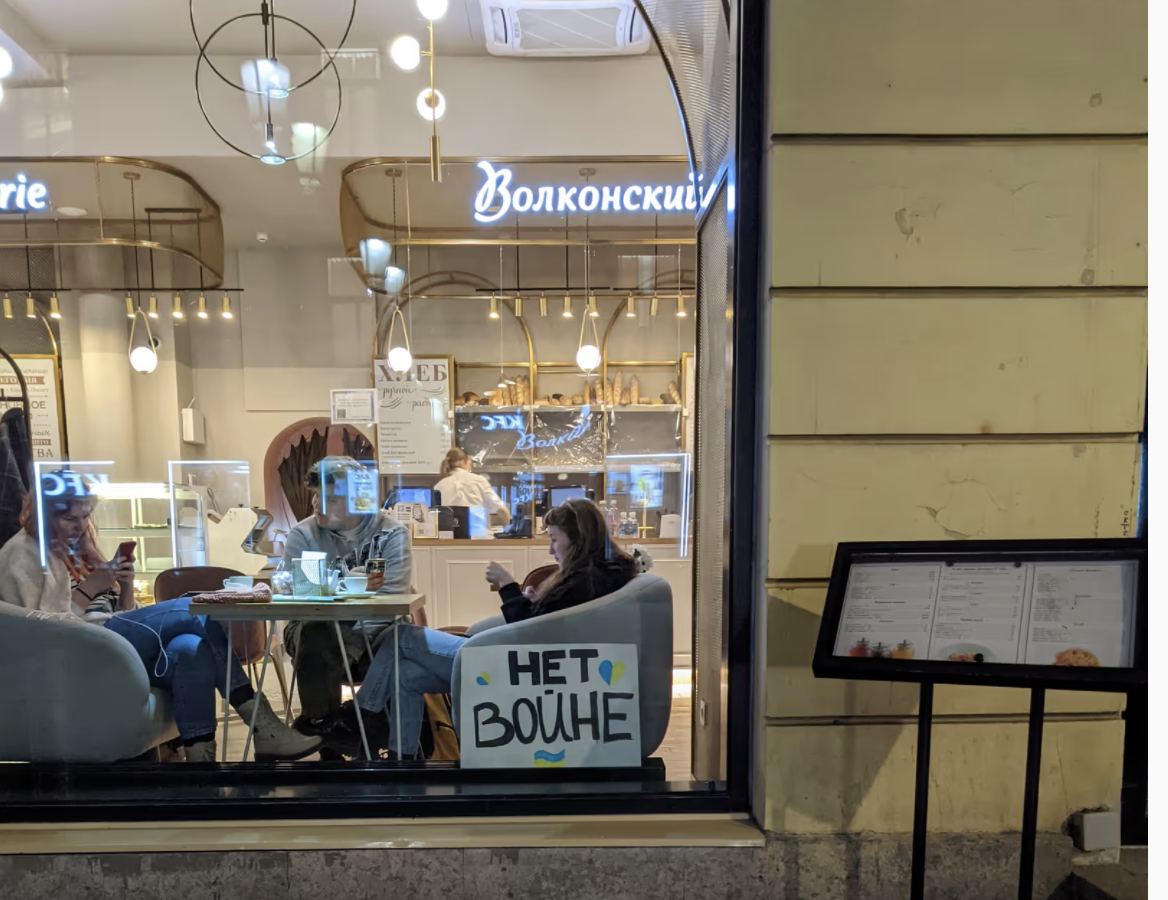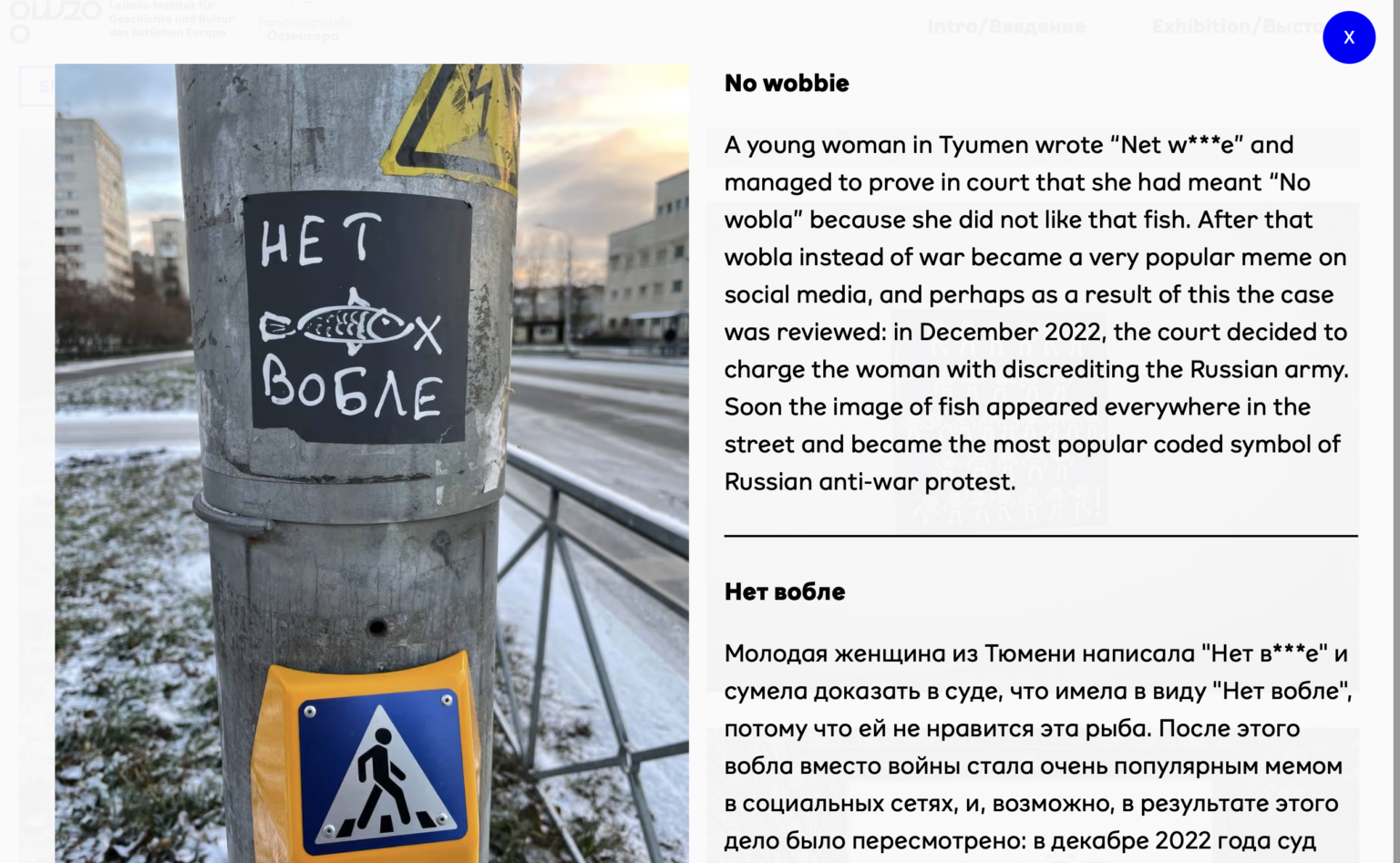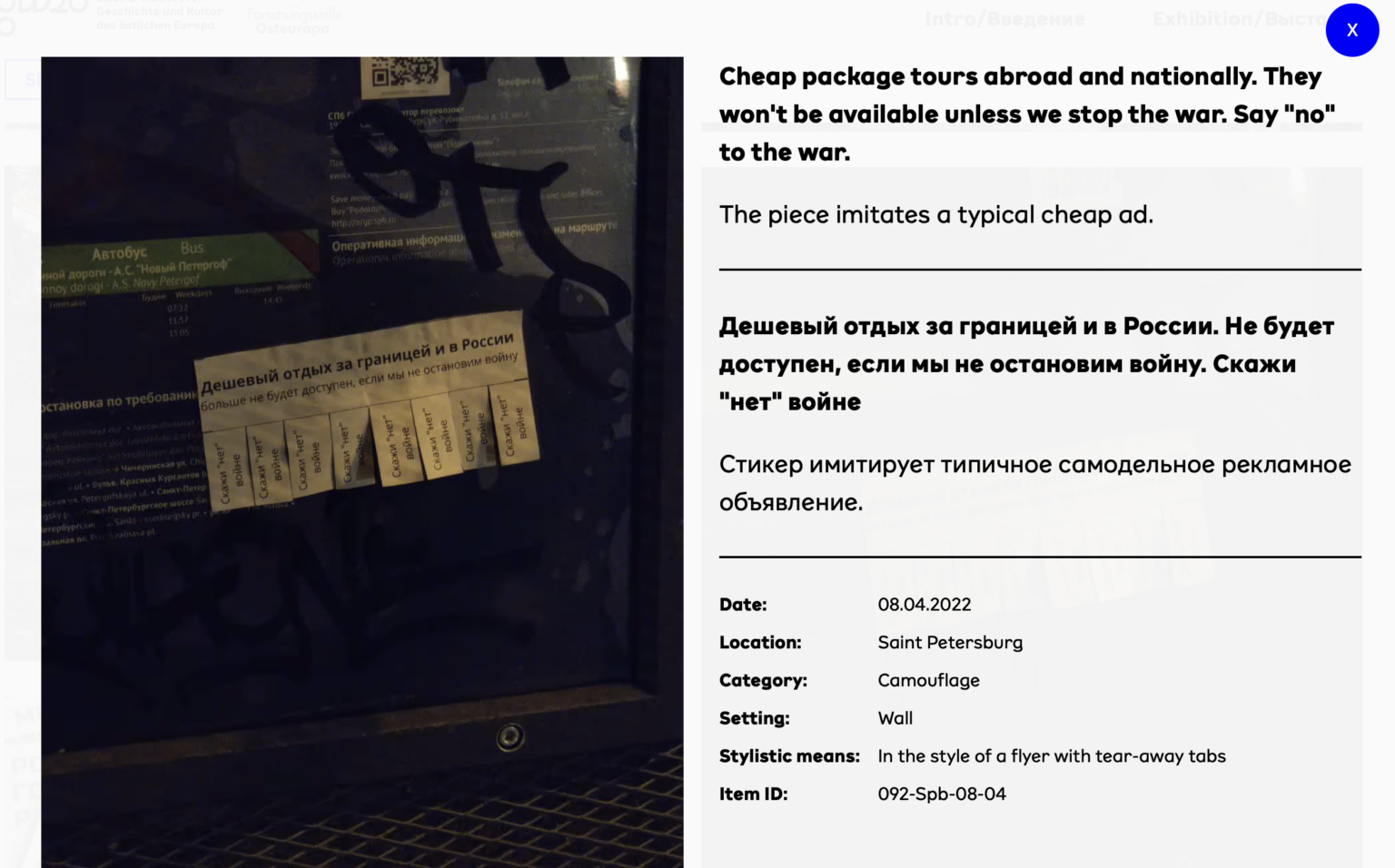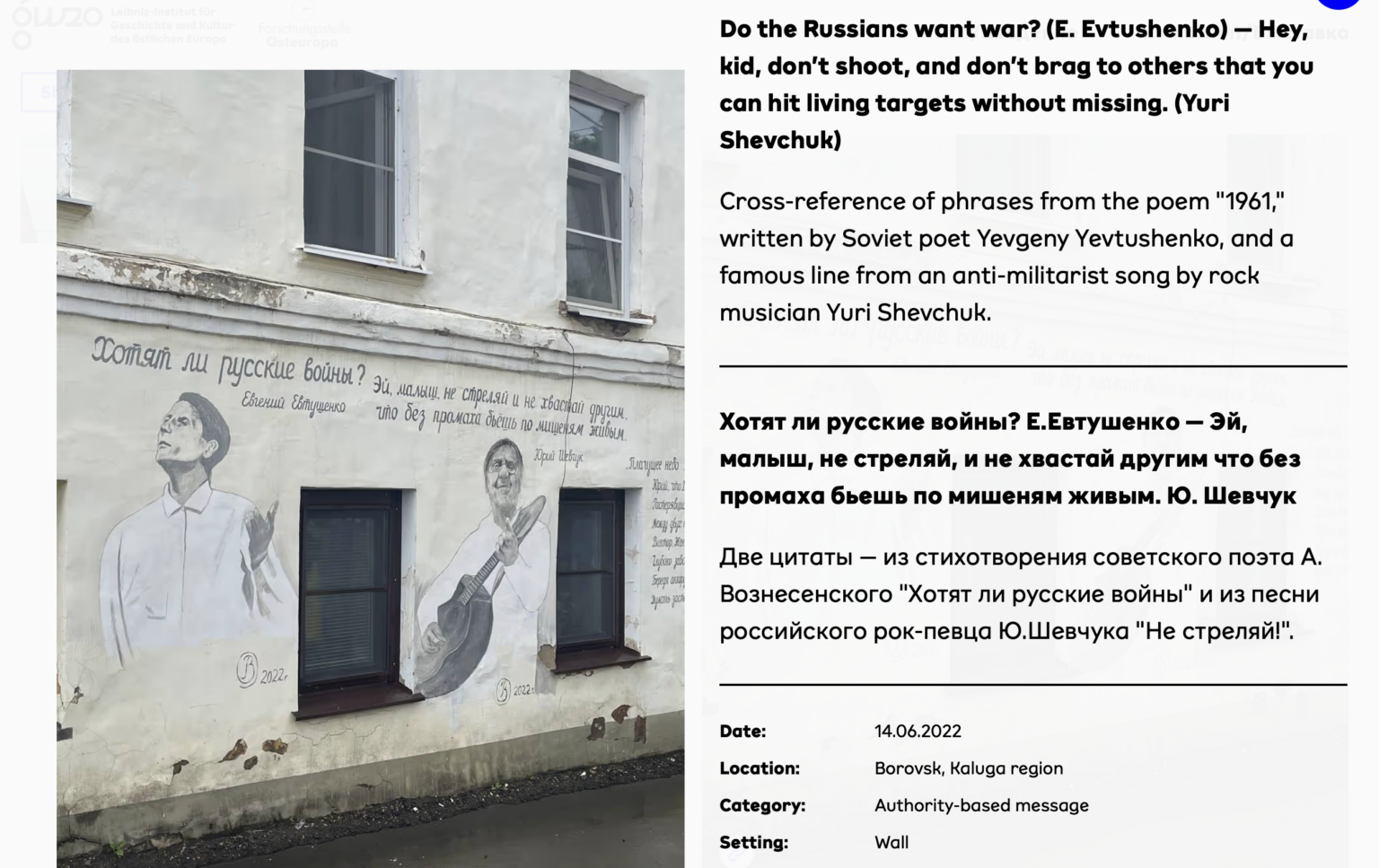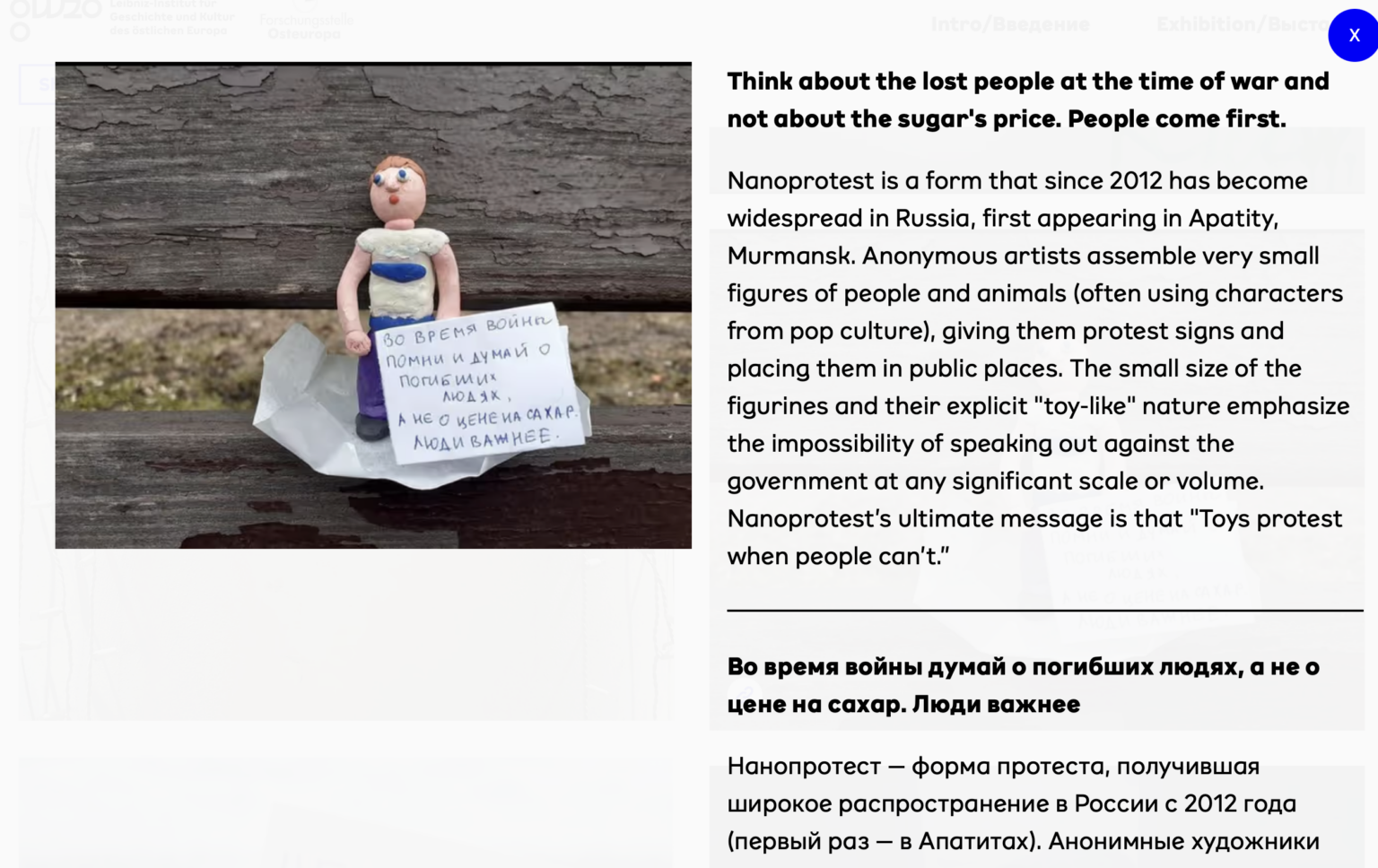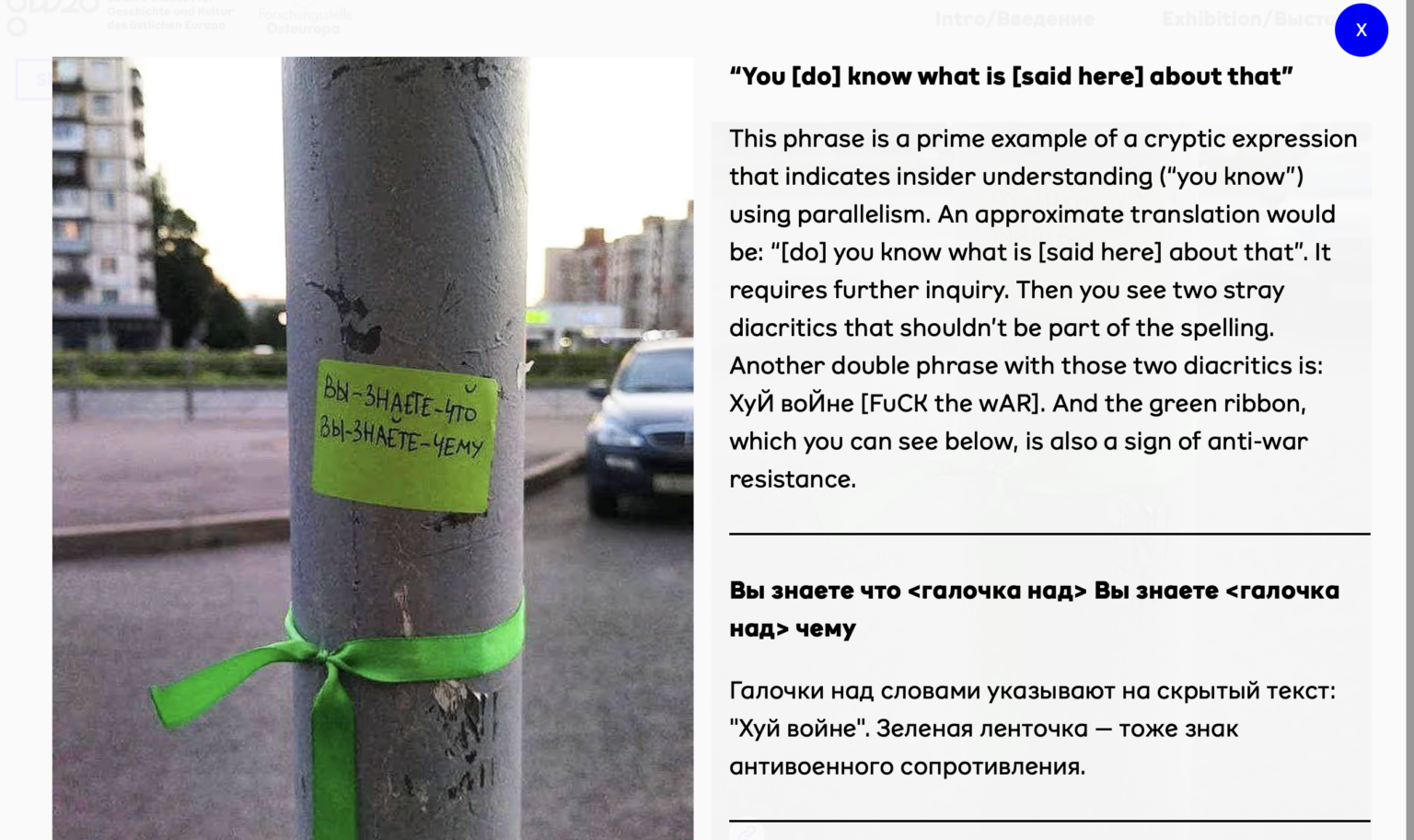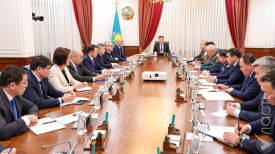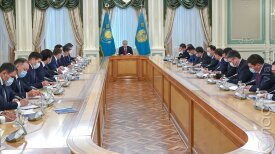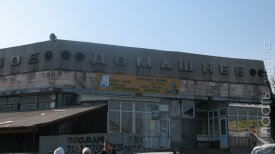This article was written by Alena Moricheva for Global Voices. An edited version is published here under a media partnership agreement.
Russian anthropologist Alexandra Arkhipova and her colleagues have been collecting the examples of anti-war street art — stickers, graffiti, leaflets, and complex installations — for 1.5 years. Now, everyone can see photos of 471 works from 48 Russian cities meticulously classified, carefully translated into English, and clearly explained in one place.
The website “No wobble” showcases the artwork, and also the story of the symbols and the Aesopian language that appeared in Russia after February 2022 and how it was used in protest art. The name of the website is the perfect example of that.
The website explains: “In Russian, ‘war’ (voina) and ‘wobble’ (vobla) sound similar and have the same number of letters, which is important for the coded language.”
At the same time, the idea of the collection came from personal experience. Shortly after the Russian full-scale invasion of Ukraine in February 2022, one of the website's future authors found out that his underage daughter was drawing “No war” stickers with her friends sticking them in the subways and on the streets. He decided to distribute the rest himself and, while doing so, was “shaking and sweating”.
His fear was not baseless. People in Russia are fined or even jailed for less, like donning a green ribbon — a symbol of peace — in a braid. While many messages are seen just by passers-by, some graffiti or installations make it to the news. On Russia Day, a national holiday celebrated on June 12, the neologism “Изроссилование” (Izrossilovaniye) that combines the words ‘rape’ and ‘Russia’ appeared in many feeds. Some time later, Philippenzo, its author, was arrested.
художник Philippenzo задержан на погранконтроле после возвращения в Россию. вменили пока 19.3, арест на 15 суток
— артём лоскутов (@kissmyba) July 29, 2023
его последняя работа в Москве 12 июня: pic.twitter.com/5E9ToUyfCG
A tweet about his arrest read: "Artist Philippenzo detained at the border control after he returned to Russia. He got 19.3 [article of the Russian Code of Administrative Offences ‘Disobedience to a lawful order or request of a police officer’], 15 days in jail. His last work in Moscow was on 12 June 2023."
Even though, according to the website, at least 653 people were caught applying stickers or drawing graffiti, to many street art is still the safest way to express their anti-war or anti-regime sentiments.
People continue to post stickers, draw messages, place tiny figures, and even create complex graffiti with well-known quotes, while carefully keeping a wary eye on their whereabouts in case there are CCTV cameras, police officers, or vigilant ‘patriots.’
Global Voices spoke to Alexandra Arkhipova on Telegram and asked her whether this kind of protest existed in the past.
"In Soviet times, of course, there was protest street art. The famous Tram Protest by artist and dissident Yuli Rybakov. This kind of protest existed, just not on such a scale, and peculiar not only to the Soviet Union. For example, in [fascist] Italy, when they wrote “Viva Verdi!” on the walls, it was deciphered as “Live long Victor Emmanuel II, King of Italy,” Arkhipova said.
According to Arkhipova, such disguises and ciphers “are blossoming in China.” It's enough to recall the story with the ban on Winnie the Pooh. There is such a thing in Belarus, too. Except that, in order to show it, someone needs to collect it.
She continues. “An inscription, a sticker, or an installation is a statement in two forms. First, it is something in a public space. Second, it can spread into the digital space. The most engaging, the most eye-catching inscriptions are selected so that people take pictures of them.”
“It is important for me to expand the geography, to write not only about Moscow and St. Petersburg, but what is happening in, let’s say, Smolensk, because the responsibility for graffiti in Smolensk may be higher than in Moscow. Any protest activity in Smolensk attracts more attention,” Arkhipova said.
Arkhipova does not know if the collection on the site will be replenished, but she saves everything that is sent to her. She believes street art should definitely be studied, but, so far, it is a highly underrated phenomenon, especially in Russia.
“People try to pay attention to the works of professional artists who have complex performances. And such works are also in this exhibition, but I also tried to collect and show things done by that those people who are not art professionals,” Arkhipova said.
According to Arkhipova, many people have found a solace in such quiet protest, but it has also become a way to find allies, which is also very important.
"Here's a person going at 3 a.m. in Yekaterinburg to stick 'No to war' stickers and, sneaking up to a pole, they find another person's 'No to war' sticker there. And they feel tremendous joy, because they realize that there is an ally."
Arkhipova argues that state propaganda makes people lonely.
"Propaganda seeks to show that any person who thinks differently is in a significant minority. This is why there is such a fierce battle for the ability to speak out in public spaces."
Seeing anti-war street art around forces other people to reflect.
"[Showing so many installations] strengthens the statement. It shows that there are many people around who are against the war."
Поддержите журналистику, которой доверяют.
